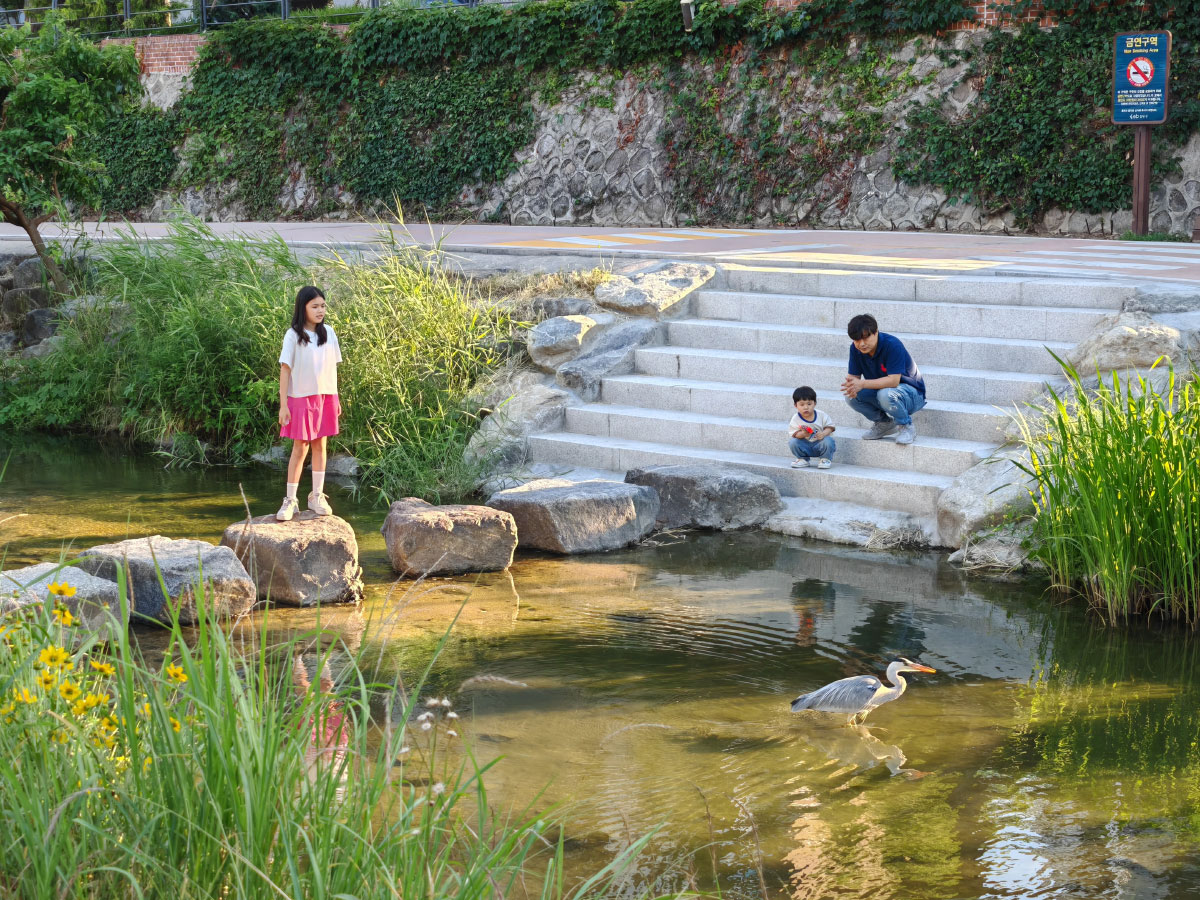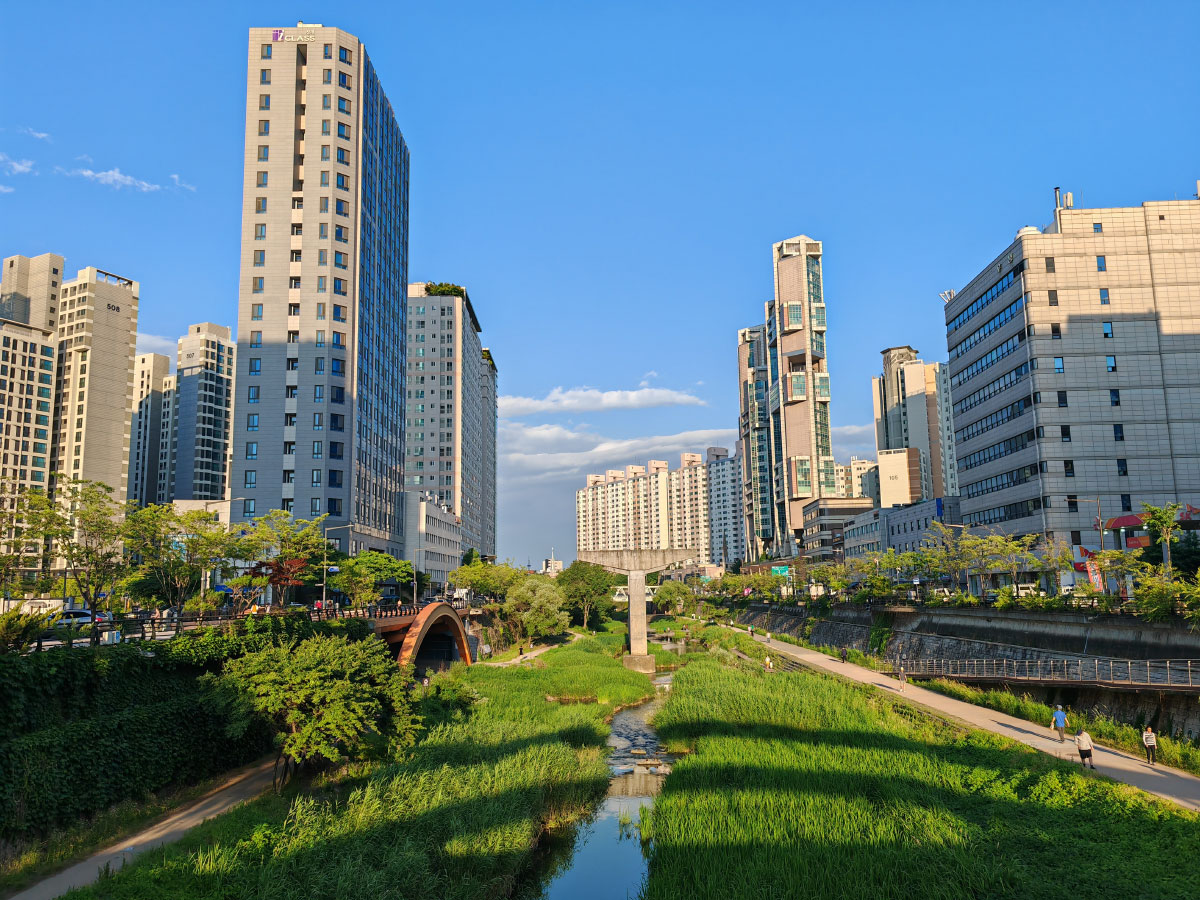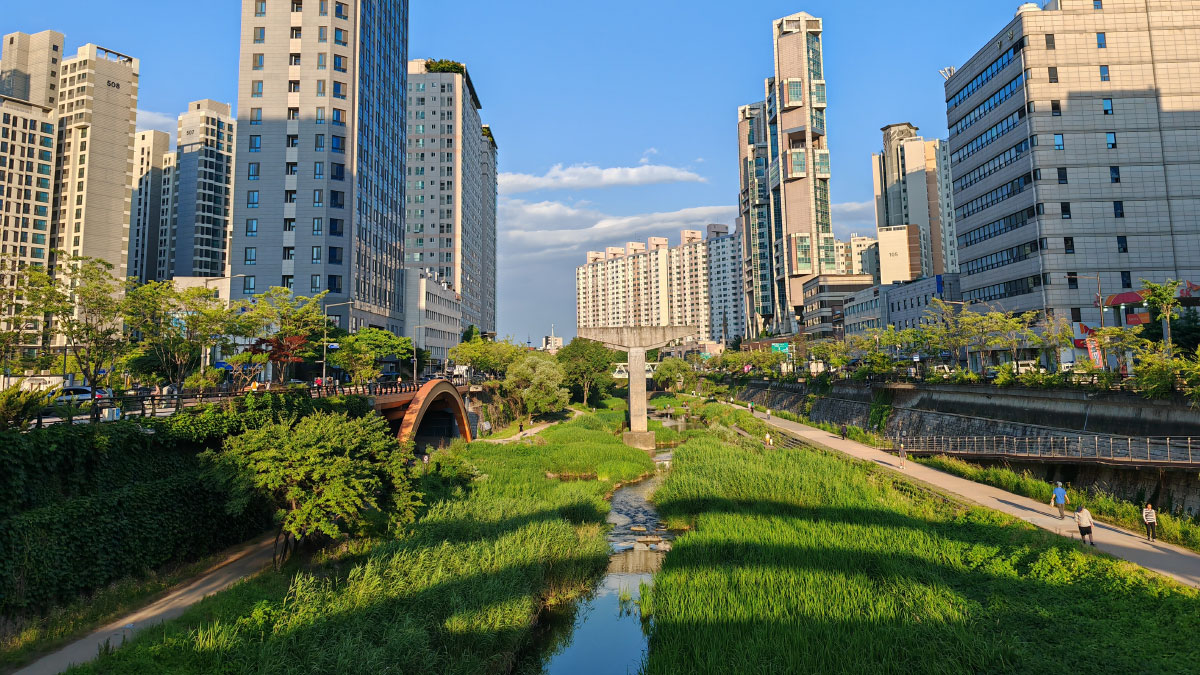The renaturation of the Cheonggye stream, a former tributary of the Han River running through the centre of Seoul, South Korea, is a paradigmatic case of urban regeneration. It is an example, or rather, a model of urban infrastructure renaturation that has attracted international interest. In fact, it has inspired similar projects in other cities seeking to reverse the negative effects of urbanisation on their ecosystems. With its development, natural spaces were recovered and the urban fabric was made more habitable and sustainable. Through this strategic intervention, Seoul managed to transform a degraded area into a benchmark of ecological and social development, an environmentally sustainable space and a quality of life factor for the city’s inhabitants.

Kwang Mo Choi (최광모) - CC BY-SA 4.0
Background and historical context
The Cheonggye or Cheonggyecheon Stream, which once flowed from west to east through the centre of the South Korean capital, served the daily life of the local inhabitants since the Joseon Dynasty period (1392-1897). Historically, from the time of the Joseon Dynasty until the mid-20th century, it was part of Seoul’s first sewerage system. After the Korean War (1950-1953), many residents migrated to the city and settled in temporary houses along the stream. Finally, rubbish and waste caused it to be covered with concrete in 1958. As late as 2003, the creek was still buried under an intricate tangle of urban infrastructure. Then, Lee Myung-bak, Mayor of Seoul, proposed its restoration as part of a wider urban regeneration plan.

Kwang Mo Choi (최광모) - CC0 1.0 Public Domain
Urban renaturation process
The Cheonggyecheon restoration project was completed in September 2005, two years after it was proposed by the Mayor of Seoul. The works consisted of removing the highway covering the stream and redesigning the watercourse. At a total cost of approximately €357 million, the project transformed a 5.8 km stretch into a green and accessible public space.
One of the main technical challenges was the recovery of the water flow, as the original stream had virtually disappeared. A pumping system was necessary to maintain the constant flow of water from the Han River. This restored the stream to an appearance and function close to its original state. In addition, it was necessary to redefine road traffic through the city centre. It was also decided to restore several historic bridges across the Cheonggyecheon.

Dwxn - CC BY-SA 4.0
Impact of the Cheonggyecheon stream renaturation project
The renaturation of the Cheonggyecheon has had multiple impacts on the city. From an environmental perspective, the restoration improved air quality and reduced the average temperature in the area. Local biodiversity, with the reappearance of species of flora and fauna that had disappeared, found favourable conditions for their development.
On the other hand, from an urban point of view, the renaturalisation of the Cheonggyecheon revalued properties in the surrounding area, which may have had the undesirable consequence of gentrification. In any case, the removal of the motorway improved pedestrian mobility and access to a pleasant and natural public space, where one not only breathes better but is also treated to unexpected scenery.

Ken Eckert - CC BY-SA 4.0

Dwxn - CC BY-SA 4.0
Sources: Wikipedia English, Wikipedia Español, Archdaily.






